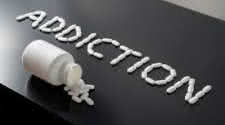Ephedrine Study - Can Ephedrine Become Addictive?

Advanced Mind & Health
Ephedrine is a constituent of a natural herb called mahuang, which has been used for medicinal purposes in China for more than 5,000 years. A synthetic version of ephedrine is currently sold over-the-counter, although it has been banned in several U.S. states. Bodybuilders favor
ephedrine because its thermogenic effects (converting fat calories into heat) promote the burning of bodyfat while sparing muscle. This is especially true if ephedrine is combined with caffeine and aspirin at levels of 20, 200 and 320 milligrams (mg), respectively.
Ephedrine's fat-burning and stimulating effects primarily result from its ability to activate catecholamines, such as epinephrine and norepinephrine, Both of these body chemicals promote fat-cell release while revving up the nervous system. For most people, ephedrine is quite
safe if used in small doses, but those with certain preexisting medical conditions, such as heart disease, high blood pressure and thyroid problems, should never use it. These dangers have prompted the aforementioned ban in several states. The government also frowns an ephedrine
because it's used as a precursor substance far illicit drugs, including methamphetamine and methcathinone (aka. Cat). As well, a street drug called Cloud Nine, popular at so-called rave parties, is said to be an 'gall-natural" replacement for MDMA (Ecstasy).
Among other ingredients, Cloud Nine contains ephedrine. Although it's far less potent as a stimulant, ephedrine structurally resembles amphetamine. But is ephedrine as addictive as amphetamine? A 1994 study, published in the journal Psychopharmacology (113:381 -87), compared
the abuse potential of amphetamine and ephedrine, using 18 women and nine men. When given the choice, these subjects chose ephedrine 17% of the time, compared to 38% for amphetamine. Further, the study found that the subjective effects of ephedrine are similar to other weak and
legal stimulants, such as caffeine. As such, ephedrine is considered to have a low abuse potential.
The stimulant effects of ephedrine wear off rather quickly. It has a half-life of about six hours, meaning it takes the body six hours to break down half the initial dose. While the speed effects of ephedrine subside with regular usage, the thermogenic effects remain. In fact,
ephedrine helps to maintain an efficient metabolic rate by promoting the conversion of inactive thyroid hormone (T4) into the more-active version T5. Still, like any other drug, ephedrine can lead to trouble when taken in excessive amounts.